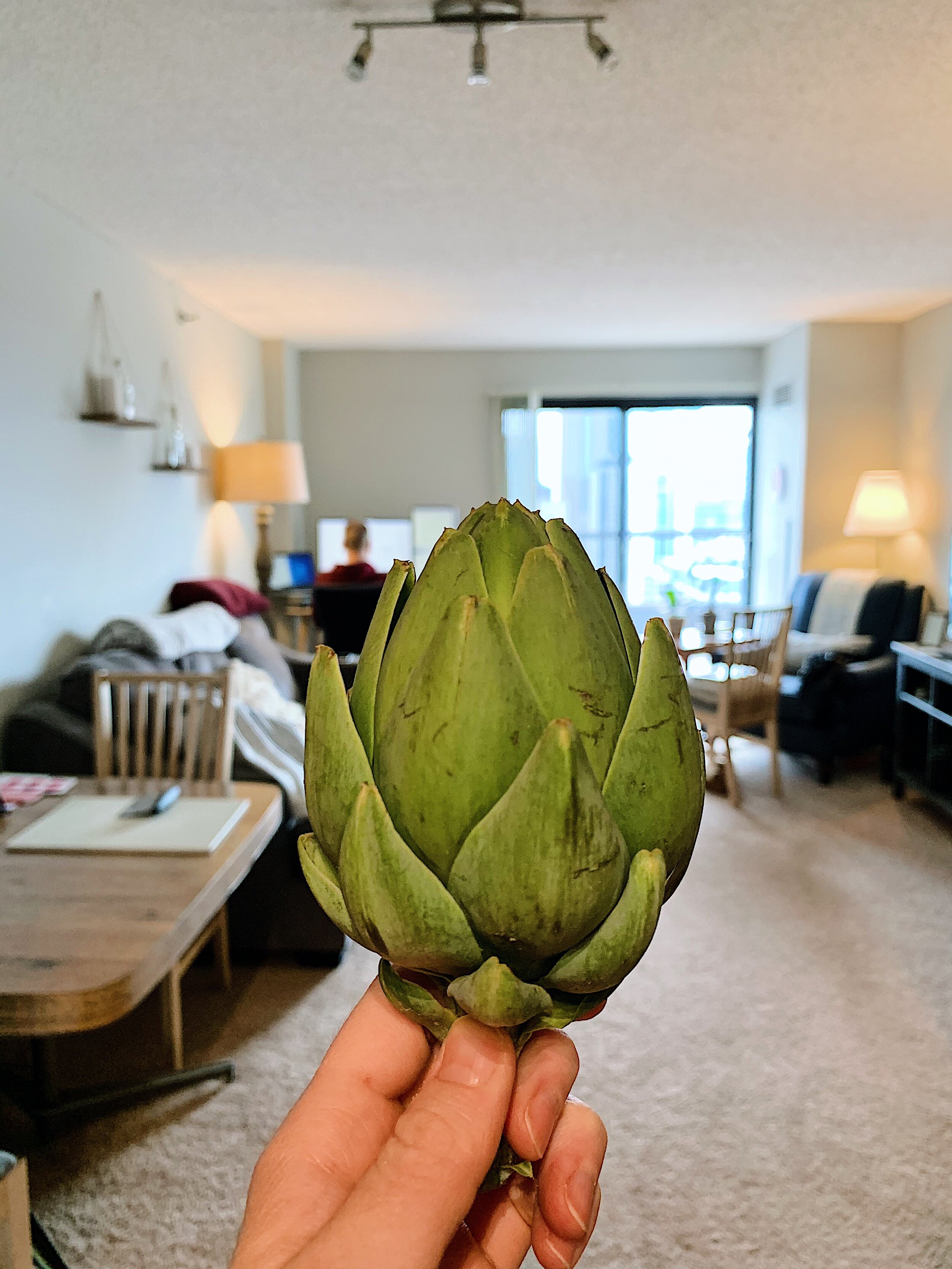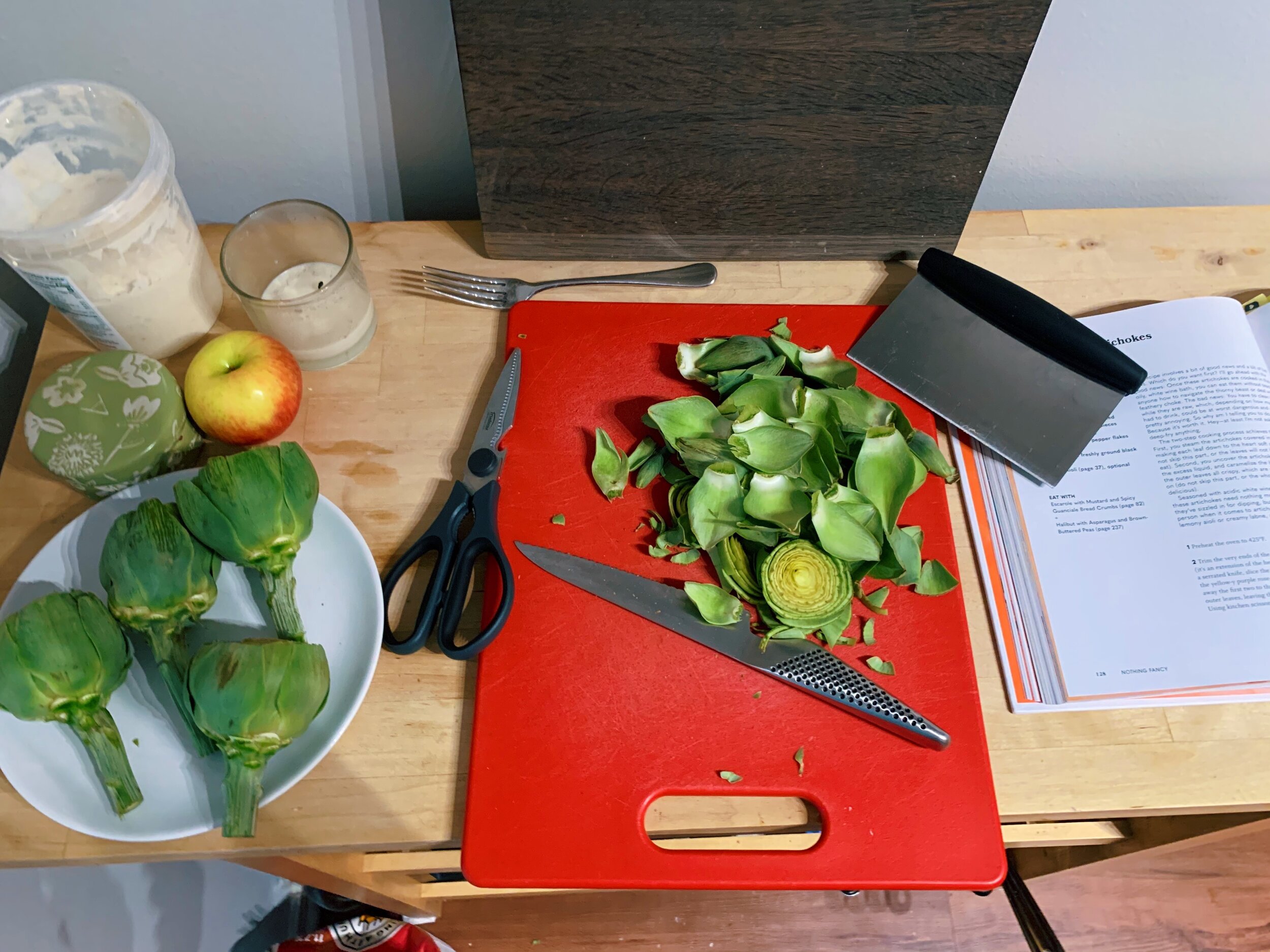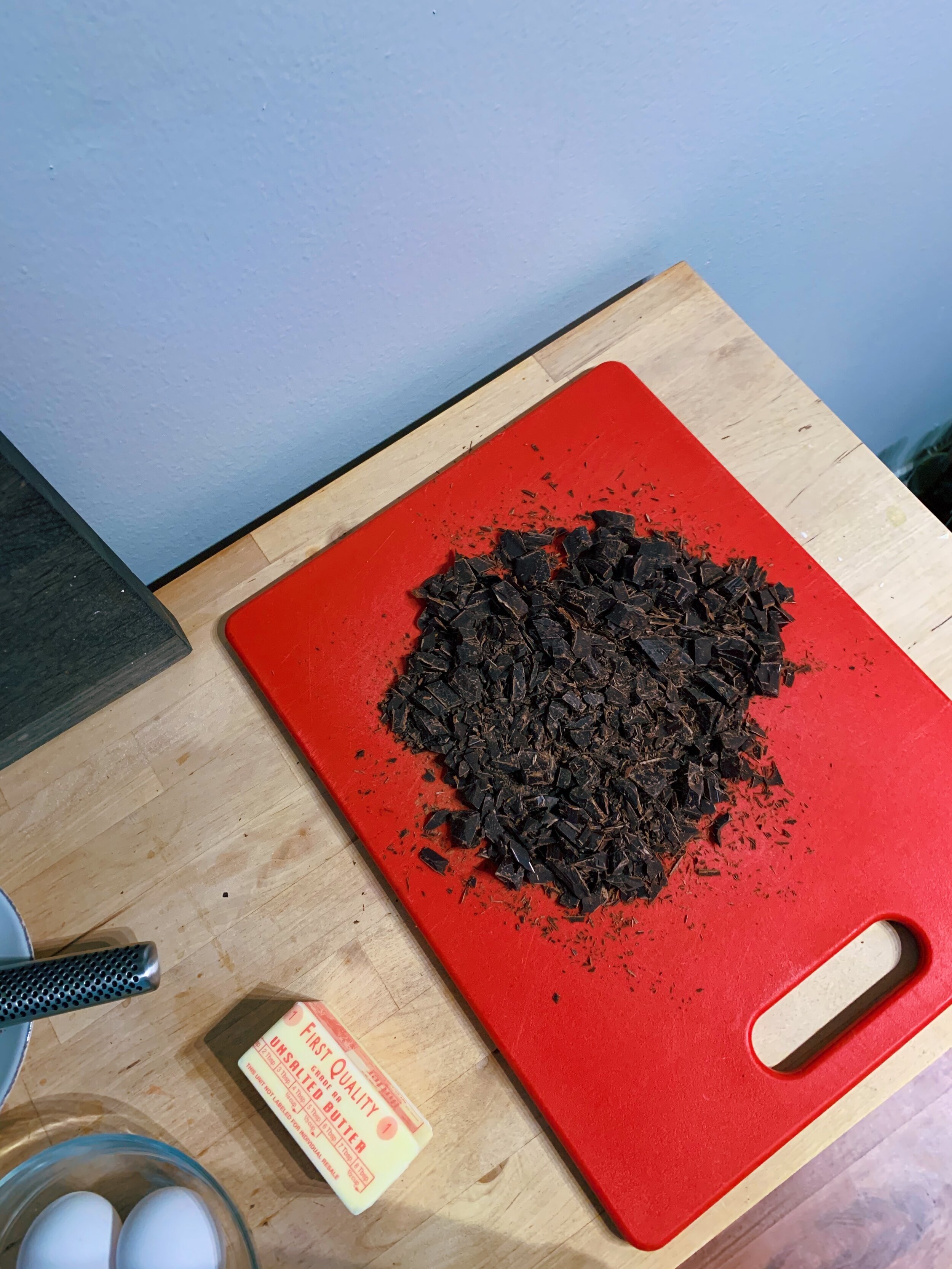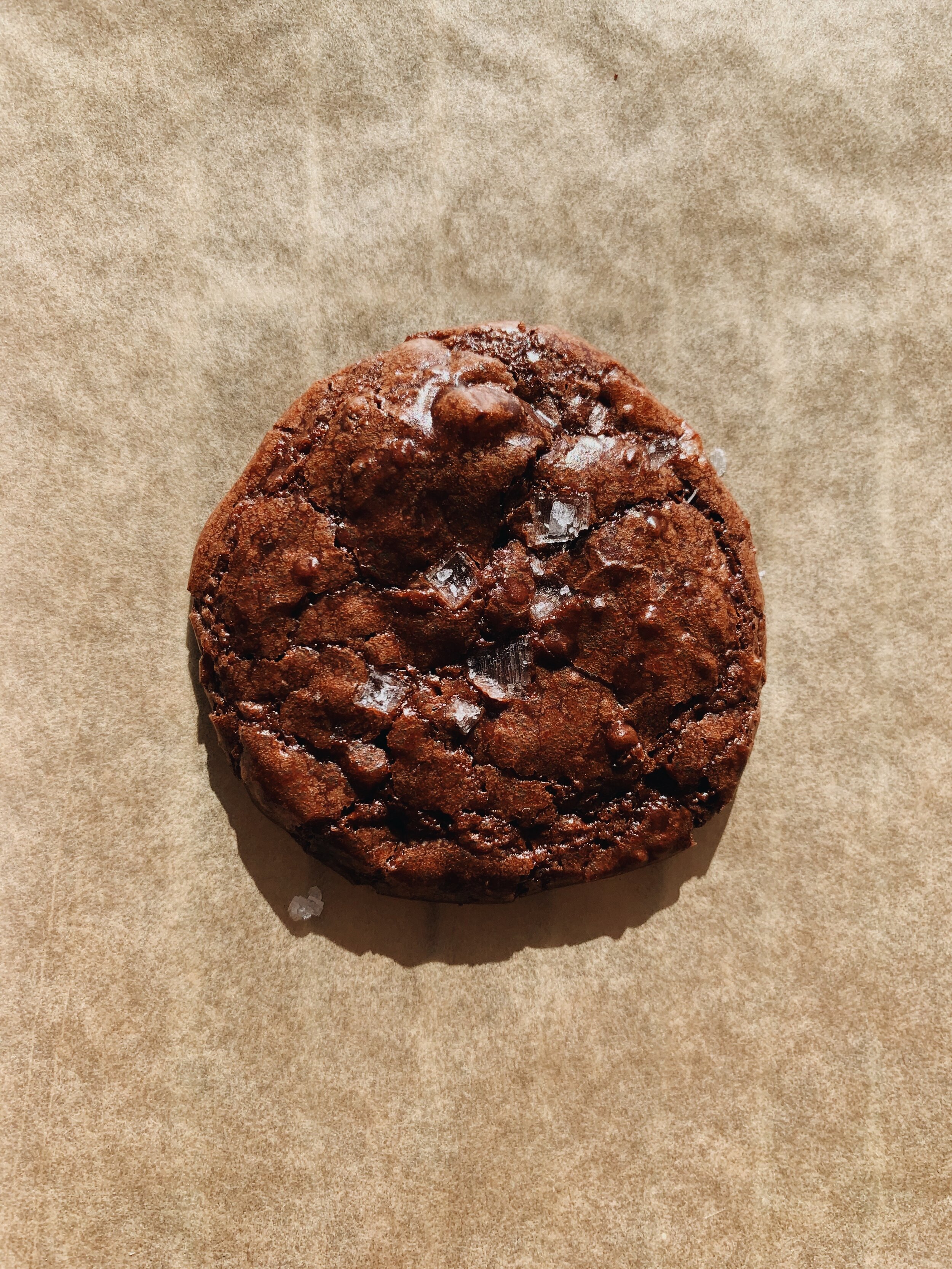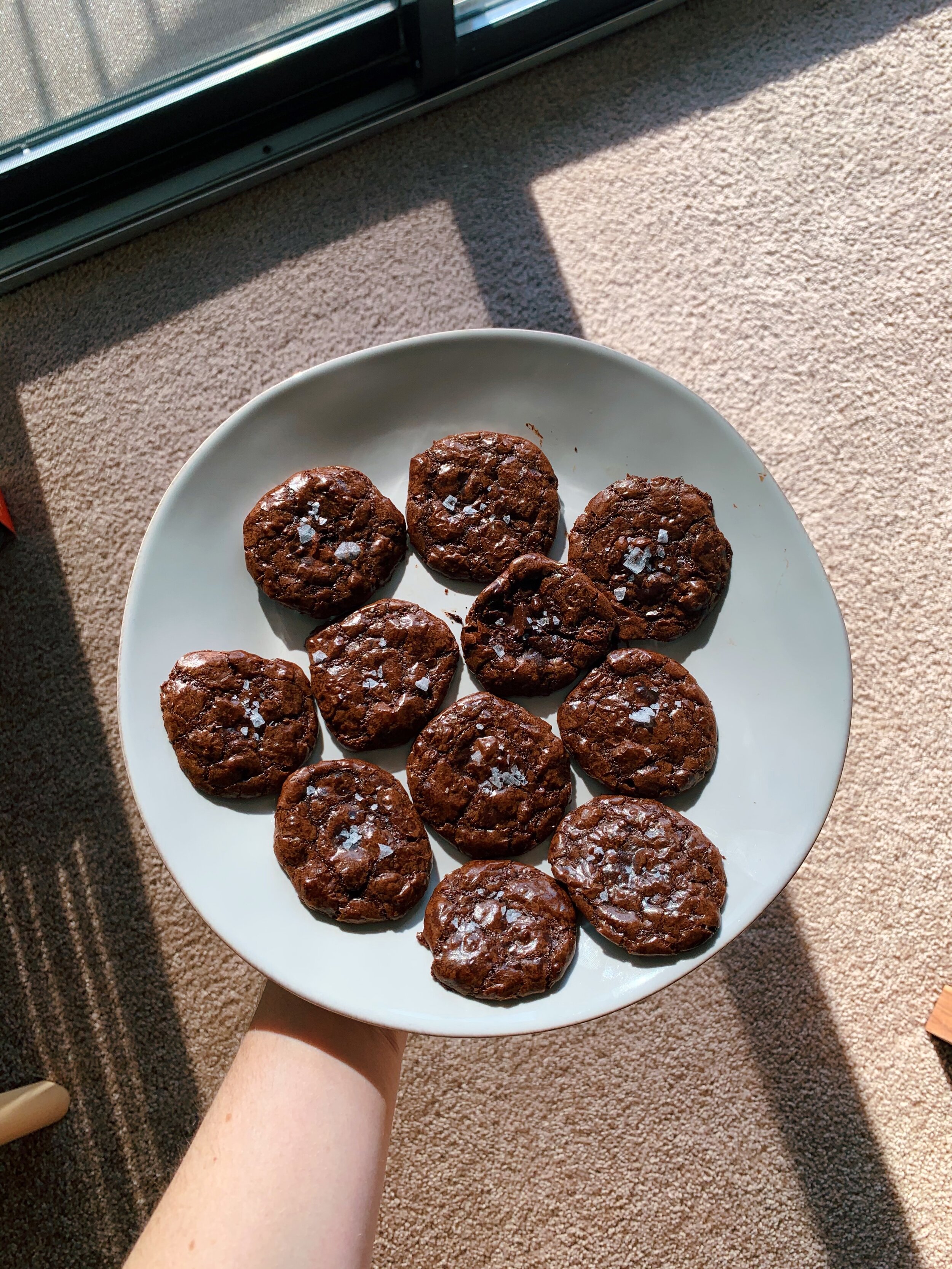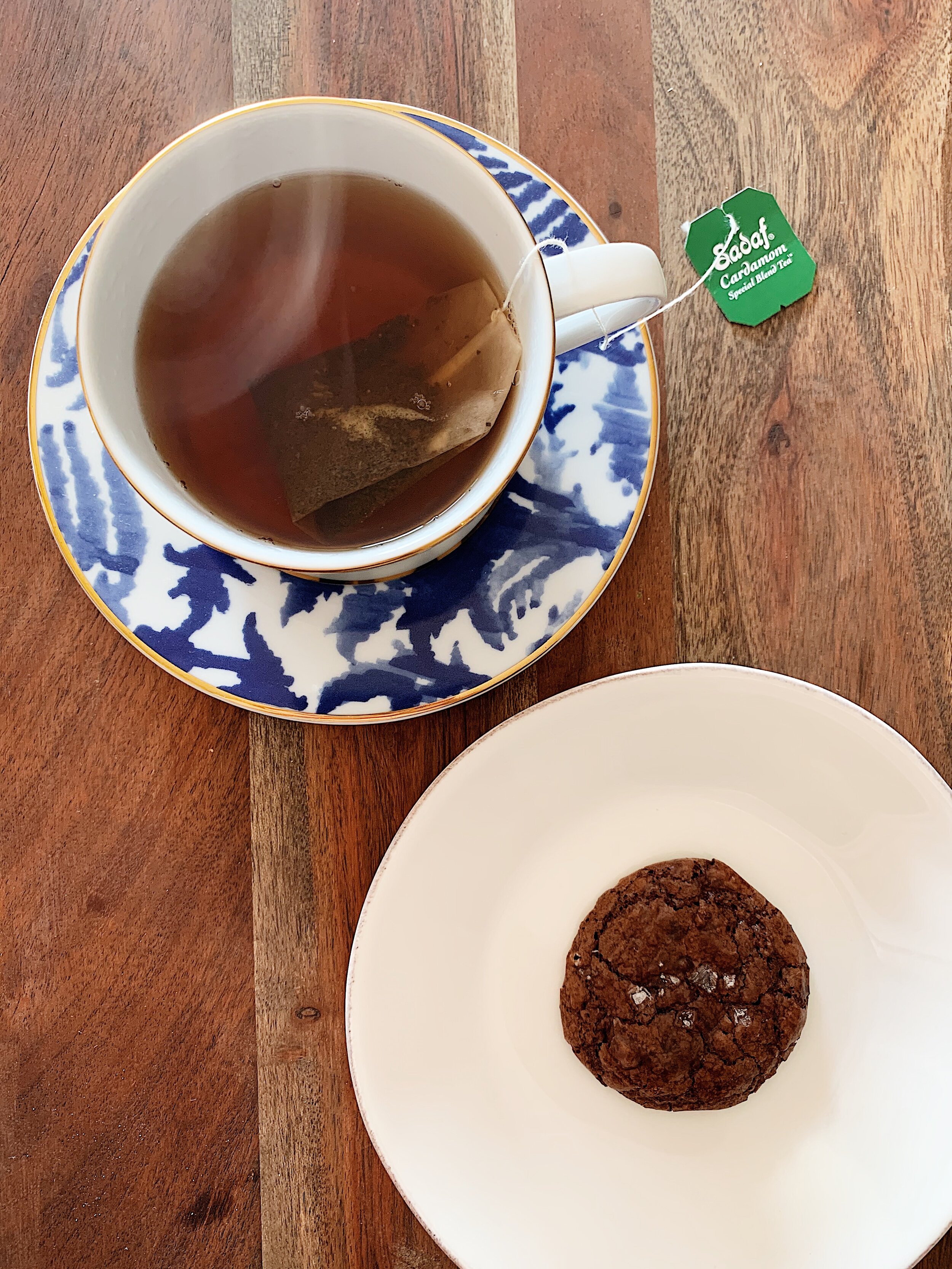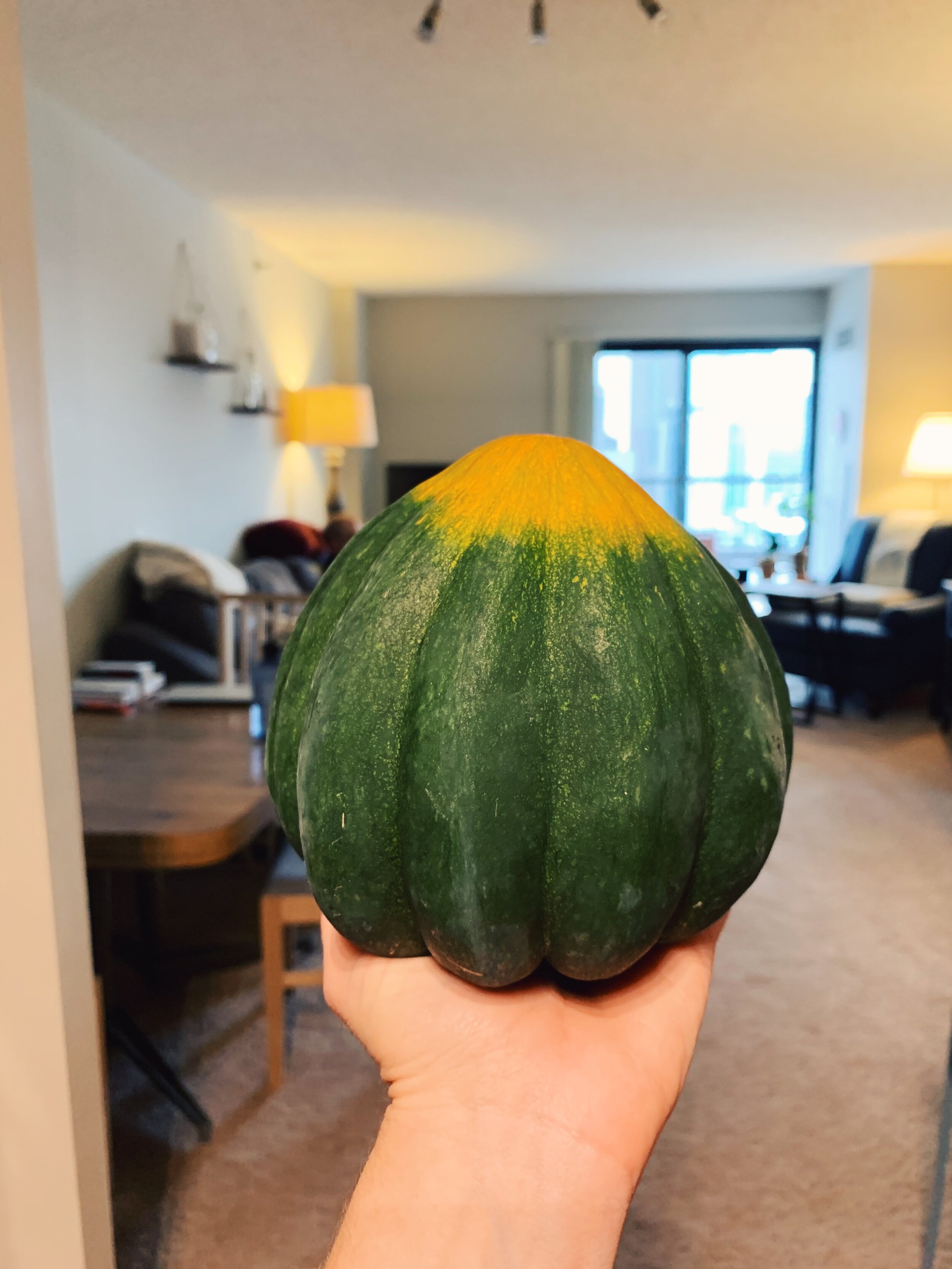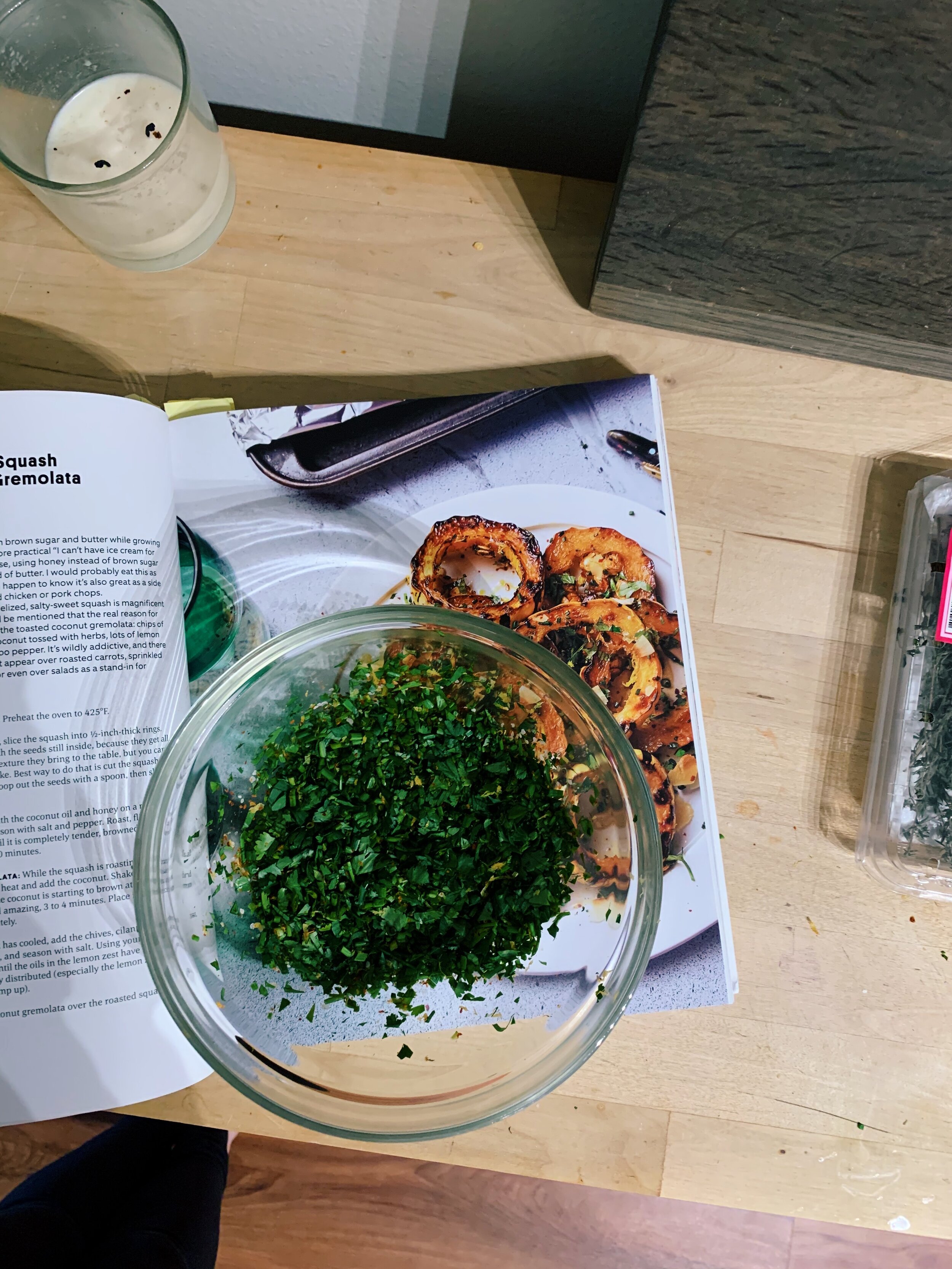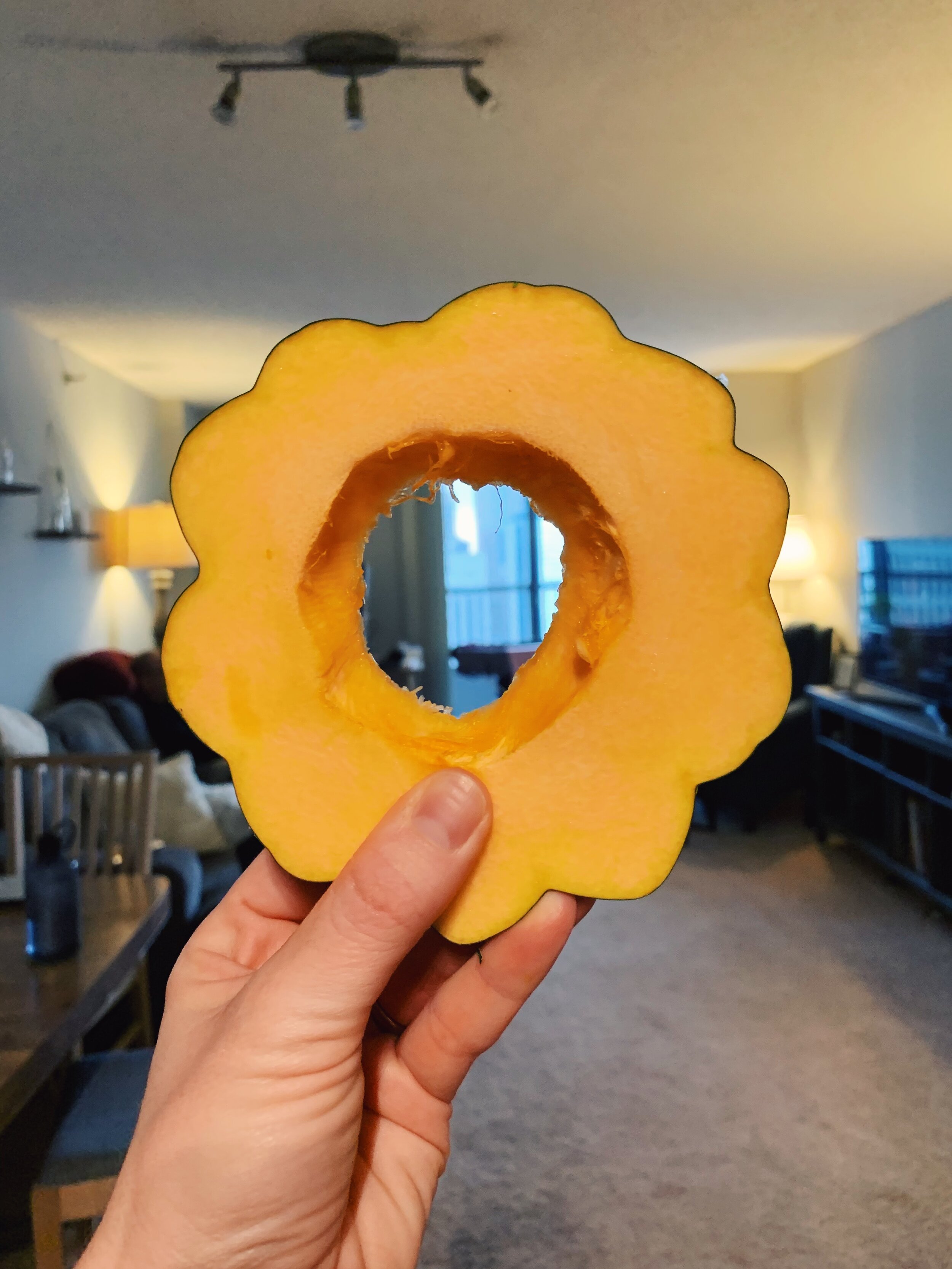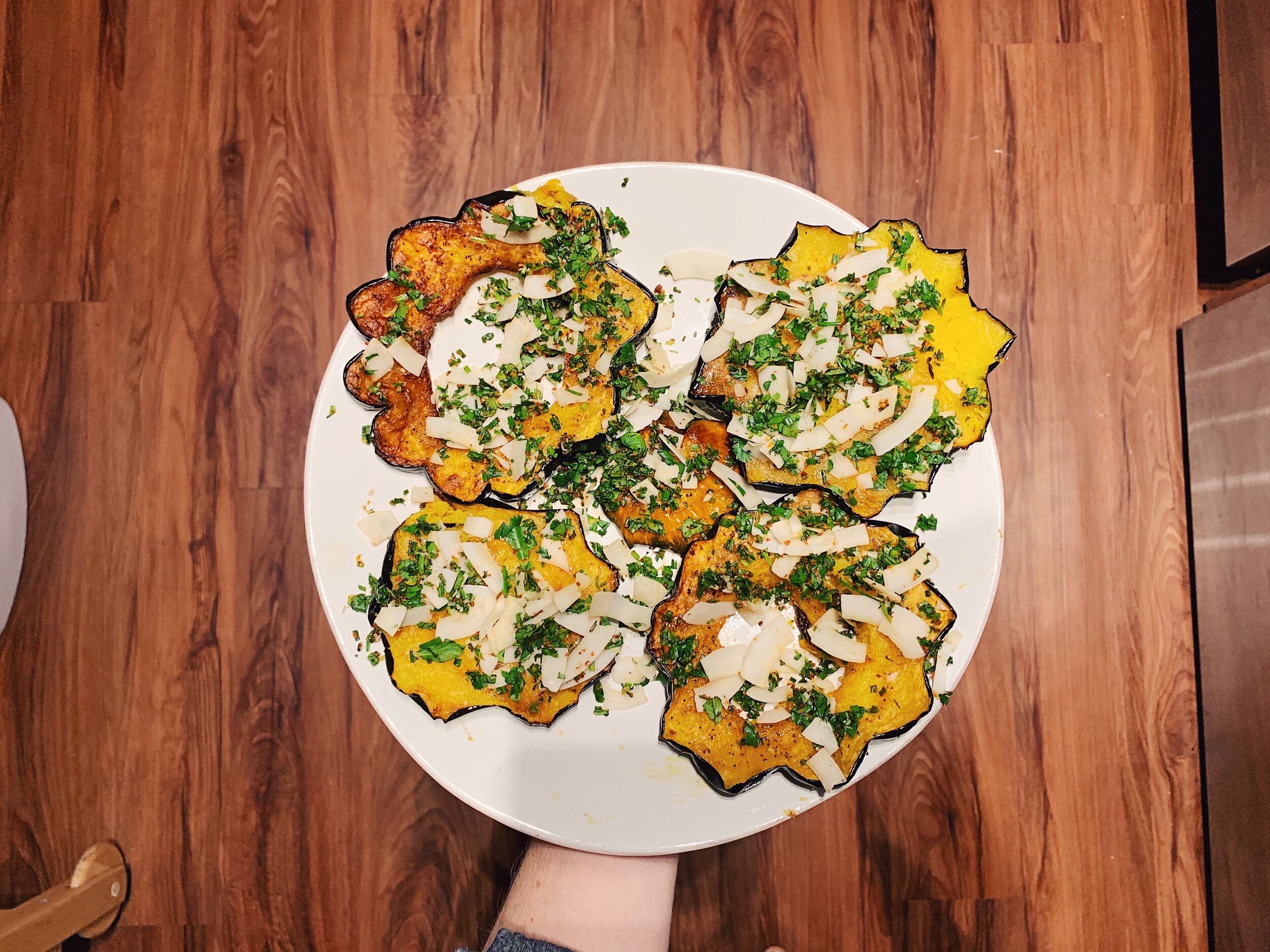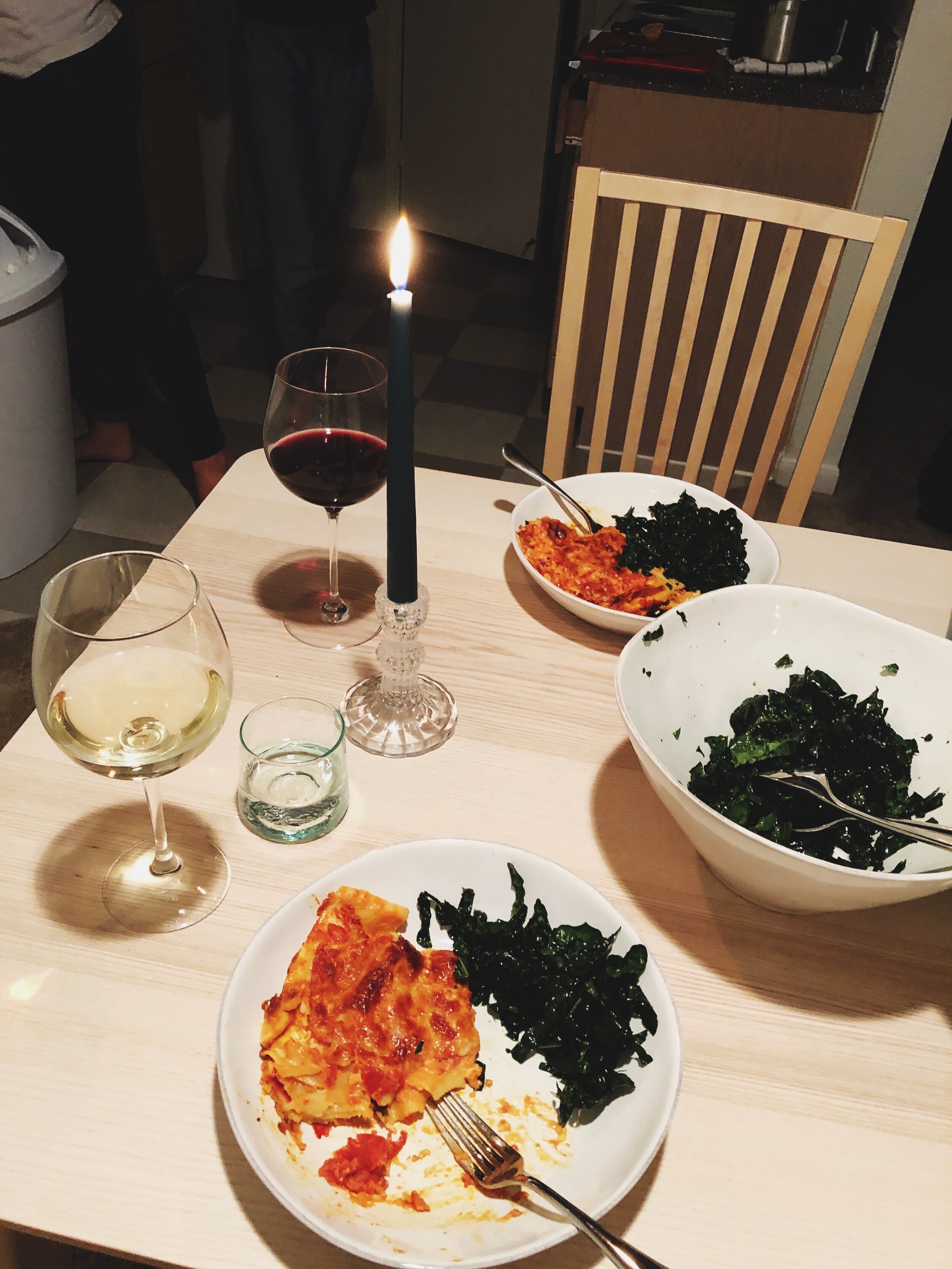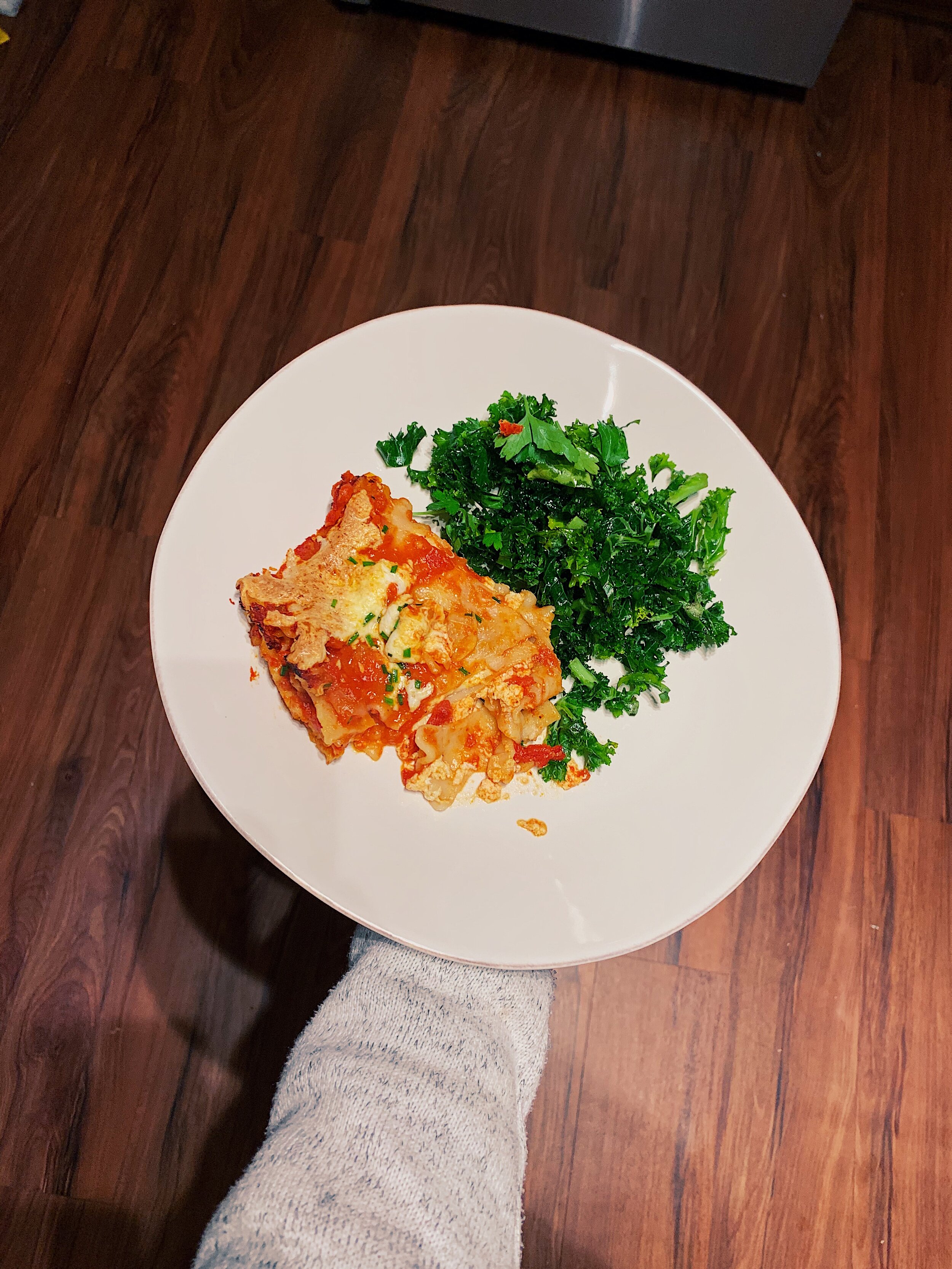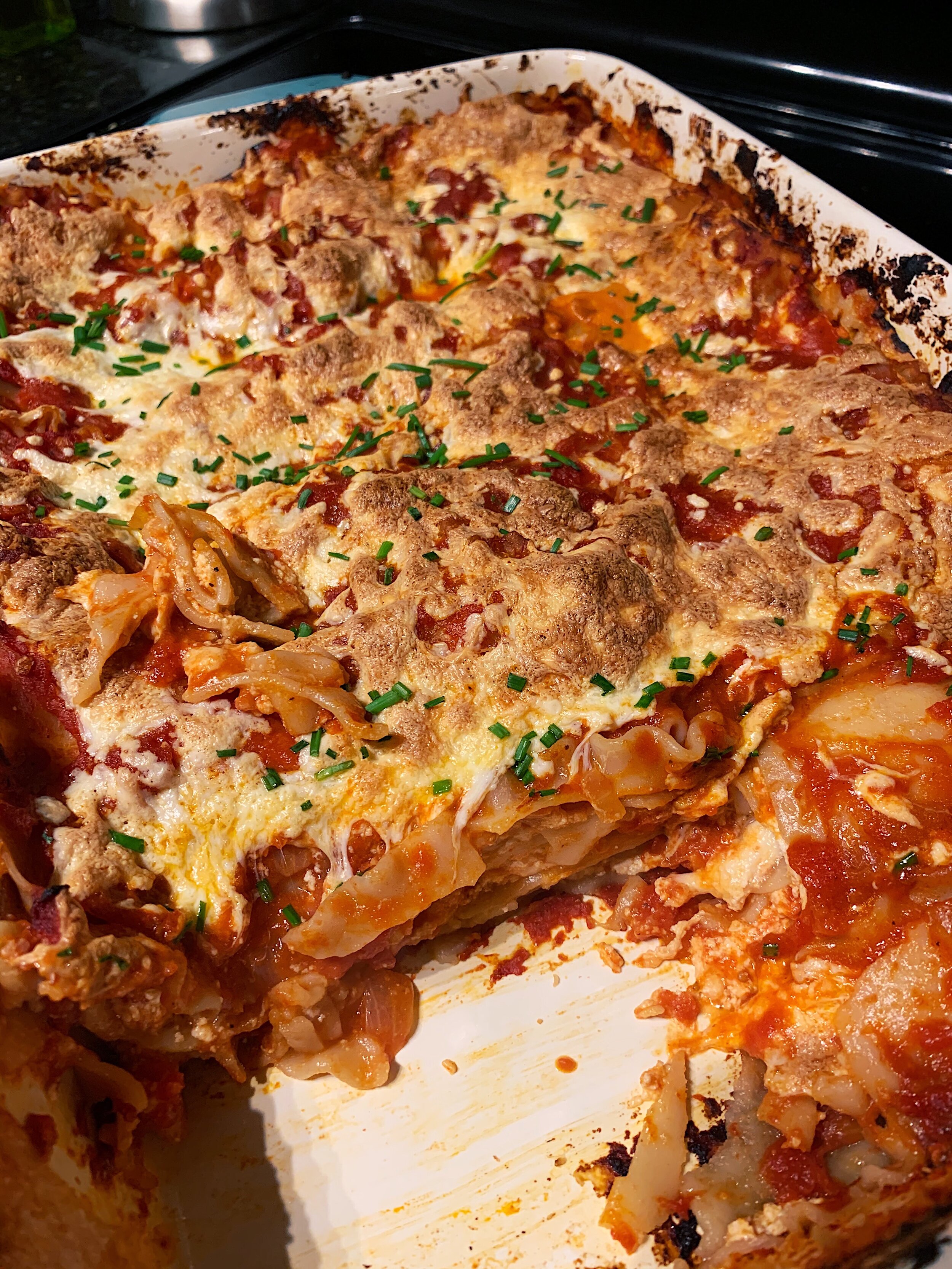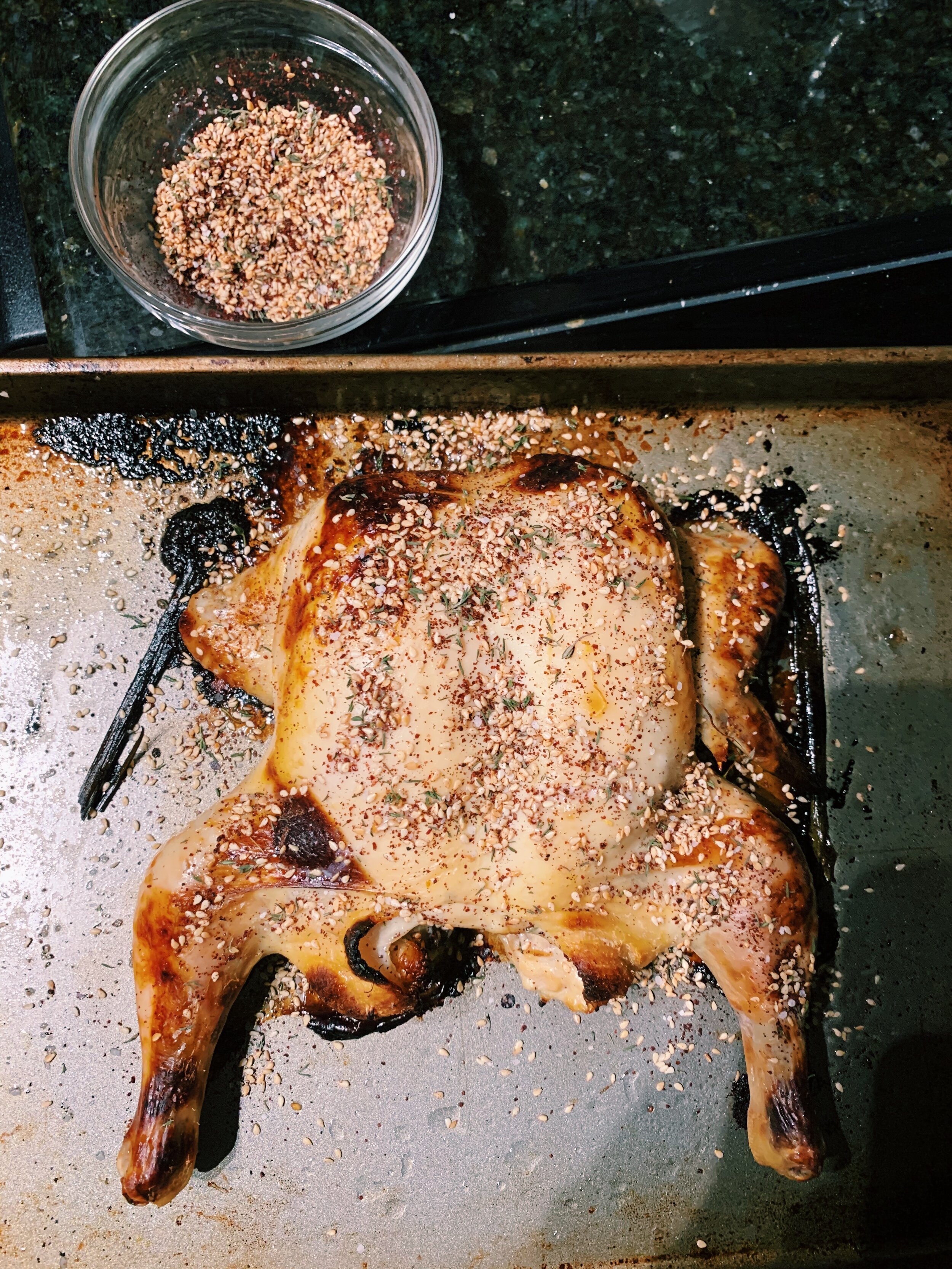I wasn’t planning on making this recipe until the summer. Artichokes always struck me as a summer food. I just couldn’t pass up $3.99 for four artichokes. Entirely an impulse buy.
The artichokes sat in my fridge for a while till I could figure out what to do with them. I knew I couldn’t just fix them up in a flurry. Artichokes are complicated, and they appreciate having some get-to-know-you time first, before getting down to business. I needed to dedicate time and space to build their trust. I finally made time last Saturday to learn how to prepare an artichoke.
There’s a lot involved: stem trimming, peeling back layers of leaves, chopping off the top of the globe, snipping thorns, and scraping out the fuzzy center just above the heart. I can’t be certain I did it all correctly, but I had a lot of fun trying.
The artichokes are cut in half lengthwise and placed cut-side down in a deep roasting pan. With them goes 1 cup of water and 1 cup of white wine, olive oil, salt, pepper, red pepper flakes, smashed garlic, and butter. Sounds like a winning combination because it is one.
After some research, I understand that stovetop steaming is the typical way to cook artichokes. Artichokes are tough and do need time to soften, which is why Alison’s oven-roasting method spends the first 40-50 minutes with a tight layer of tin foil on top of the pan. This mimics a good steam, allowing the globes to become properly tender. Then the foil is removed for the last 15-20 minutes to give the outer layers time to get slightly crispy and let the water and wine evaporate.
The few times I’ve eaten an artichoke at a restaurant, they were always served with a dipping sauce, usually garlic butter. A great route to take here, no doubt, but I was in the mood for something tangier. Alison has a recipe for Lemon Aioli as part of her Shrimp Cocktail section, so I decided to go for two firsts in one day. My first aioli endeavor ensued. I’ll write more about it when I get to shrimp cocktails, but for now, my primary takeaways from the experience are: 1. Be prepared for a very sore forearm, and 2. Without patience, you cannot have aioli.
Jordan took an hour break from work (it was a Saturday) so we could have a Wine & Artichoke Hour. We sat in our living room and sipped Cabernet while dipping the buttery leaves in aioli. It was so delightful that we talked about making it a more regular weekend activity. Sometimes it’s nice to eat something decadent in the middle of the afternoon instead of waiting until meal time. It can make 3:00pm feel less pedestrian, more special. Not all days can have special 3:00pm’s, but more of them should.
27 recipes cooked, 198 to go.


